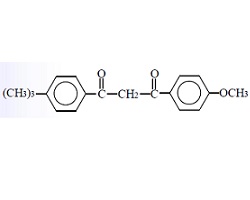Aging and Sun protection
Solar energy contains high-energy radiation, UV-light, where the wavelength is shorter than visible light, but the light intensity is relatively strong, accounting for about 6% of the total amount of sunlight. For the skin directly exposure to the sun light, the damage caused by UV-light is obvious and rapid. The UV-light whose wavelength is between 320 to 400 nm called UV-A, which can penetrate the epidermis of skin to the dermis and subcutaneous tissue, causing skin to be sagging, wrinkles, photosensitive lesions, blisters, dark spots. In addition, the UV-light with a wavelength of 290 to 320 nm is called UV-B, which can easily cause erythema and pigmentation on the skin. In order to prevent the sun from harming skin, various types of sunscreen products are developed.
Sunproof products can be can be classified into "physical sunscreen" and "chemical sunscreen". This is also the difference between the so-called inorganic sunscreen milk and organic sunscreen milk on the market. The physical sunscreen presents an coating on the surface of skin by tiny inorganic oxide particles (titanium dioxide, zinc oxide, etc.) in the emulsion, in order to form an insulating layer reflecting or scattering UV-light, to achieve the effect of sun protection. However, when using by mass customer, the inorganic particles in physical sunscreen are difficult to form a uniform layer, and in this way, it is impossible to completely prevent skin from UV-light. Compared with inorganic sunproof products, organic sunscreens use various types of UV absorbers to achieve the purpose of sun protection. UV-light absorbers can convert absorbed UV-light into useless thermal energy to achieve the effect of protecting skin. Most of the products on the market today are organic sunscreens.
The use of organic sunscreen products has contact to skin, so the components of UV absorbers must meet the requirements of national regulations. Eutec offers several UV absorbers that are FDA approved.

| CAS No | 6197-30-4 |
| Appearance | White to pale yellow crystalline powder |
| Acidity(0.1mol/L NaOH) |
0.18ml/g max |
| Assay | 95-105% |
|
The difference of UV absorptivities at 303nm |
<3.0% |
|
The sum of all of the impurities |
<2.0% |
It is a secondary UV-B absorber for high-SPF formulas. Oil-soluble.

| CAS No | 70356-09-1 |
| Appearance | White to pale yellow crystalline powder |
| Melting Point | 81-86 °C |
| Loss on Drying | 0.5% max. |
|
UV specific extinction (E1%, 1cm at 357nm) |
1100-1180 |
|
The sum of all of the impurities |
<4.5% |
It is used as an oil soluble UVA filter in cosmetic sun protection formulations.